Blue land crabs heading north from Florida. Georgia, Carolinas tracking invasive species
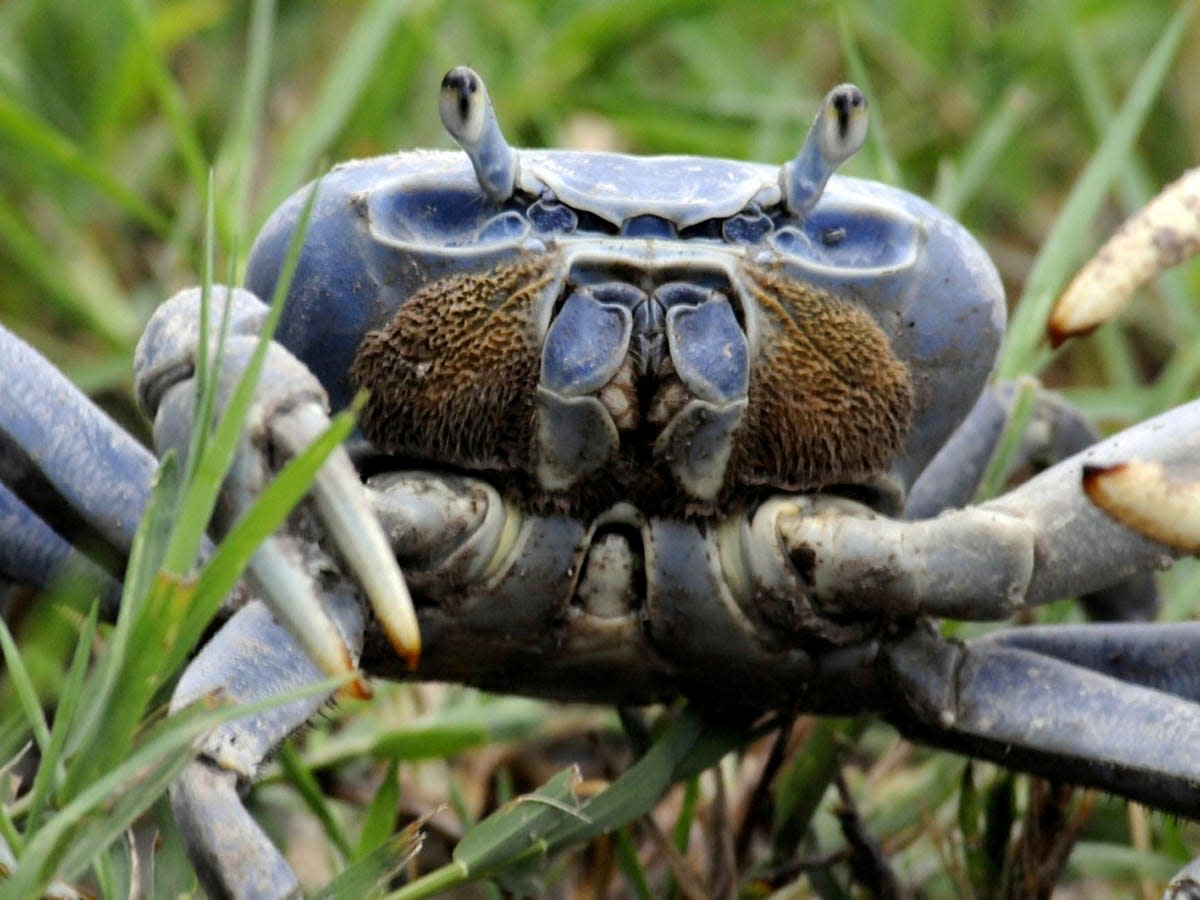
There's nothing like sharing the love, but officials as far north as North Carolina aren't smiling over the latest invasive species making its way up the East Coast from Florida: blue land crabs.
Officials in Georgia, South Carolina and North Carolina have issued warnings about the crabs, asking residents to report sightings.
Here's what you should know about the blue land crab, starting with it's not always blue.
How to identify blue land crabs
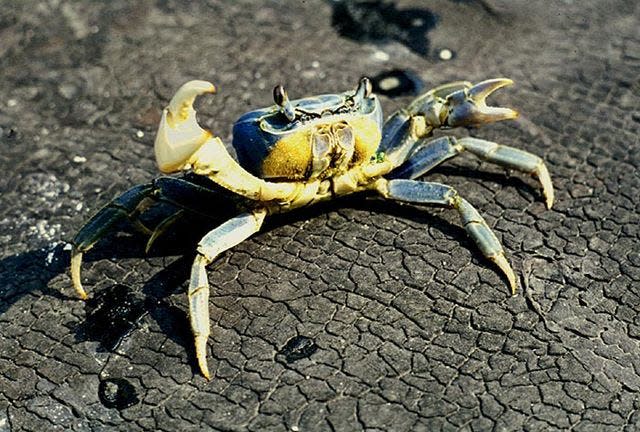
Contrary to what their name implies, blue land crabs aren't always blue.
While adults are often blue, young crabs can range in color from blue/blue-grey, tan or white. Females can change colors from blue to tan/purple or violet during mating periods and/or when young, according to the U.S. Department of the Interior.
The crabs somewhat resemble a large fiddler crab, with one claw larger than the other, the Georgia Department of Natural Resources said.
The giant land crab is the largest of Florida's semi-terrestrial crabs and can measure up to 6 in across its carapace, according to the University of Florida Institute of Food and Agricultural Sciences.
Range of blue land crabs
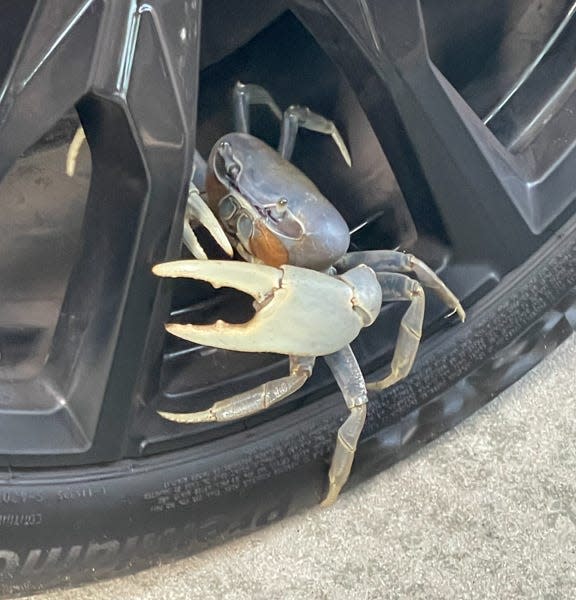
The natural range of the land crab is Bermuda, throughout the Caribbean Sea, Texas, and southern Florida.
In South Florida, the crabs can be found in low-lying areas of coastal counties. They rarely are found more than 5 miles from the coast, according to UF/IFAS.
Lately, though, they've been found as far north as North Carolina.
"Occasional sightings of the large crabs have been reported in South Carolina since 2008. The first confirmed blue land crab sighting in North Carolina occurred in summer of 2023," according to North Carolina Environmental Control.
"Researchers do not yet know the extent of the crab’s distribution throughout the Carolinas nor its impact on the environment and other wildlife. Whether the species arrived through natural expansion of its range or human-mediated sources is also not clear."
The crabs are also found in Texas.
Do the crabs live only on land?
As adults, blue land crabs dig and live in burrows on land. The can be found as far as five miles from the shore.
Females migrate to the ocean to release her eggs into shallow inshore waters. While a female may produce 300,000 to 700,000 eggs per spawn, very few larvae survive.
In Florida, the spawning season (and female migration to ocean) lasts from June to December, peaking in October and November, according to UF/IFAS.
What problems do the blue land crabs cause?
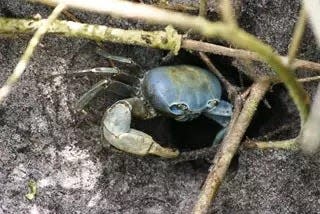
The crabs dig burrows that can be 3 to 5 inches wide and up to 5 feet deep that can damage yards and gardens. They can often be spotted when heavy rain drives them to the surface.
Trying to pick up a blue land crab could mean a "memorable pinch."
What do blue land crabs eat?
Giant land crabs are primarily vegetarians, preferring tender leaves, fruits, berries, flowers and some vegetables. Occasionally they will eat beetles or other large insects.
Are blue land crabs edible?
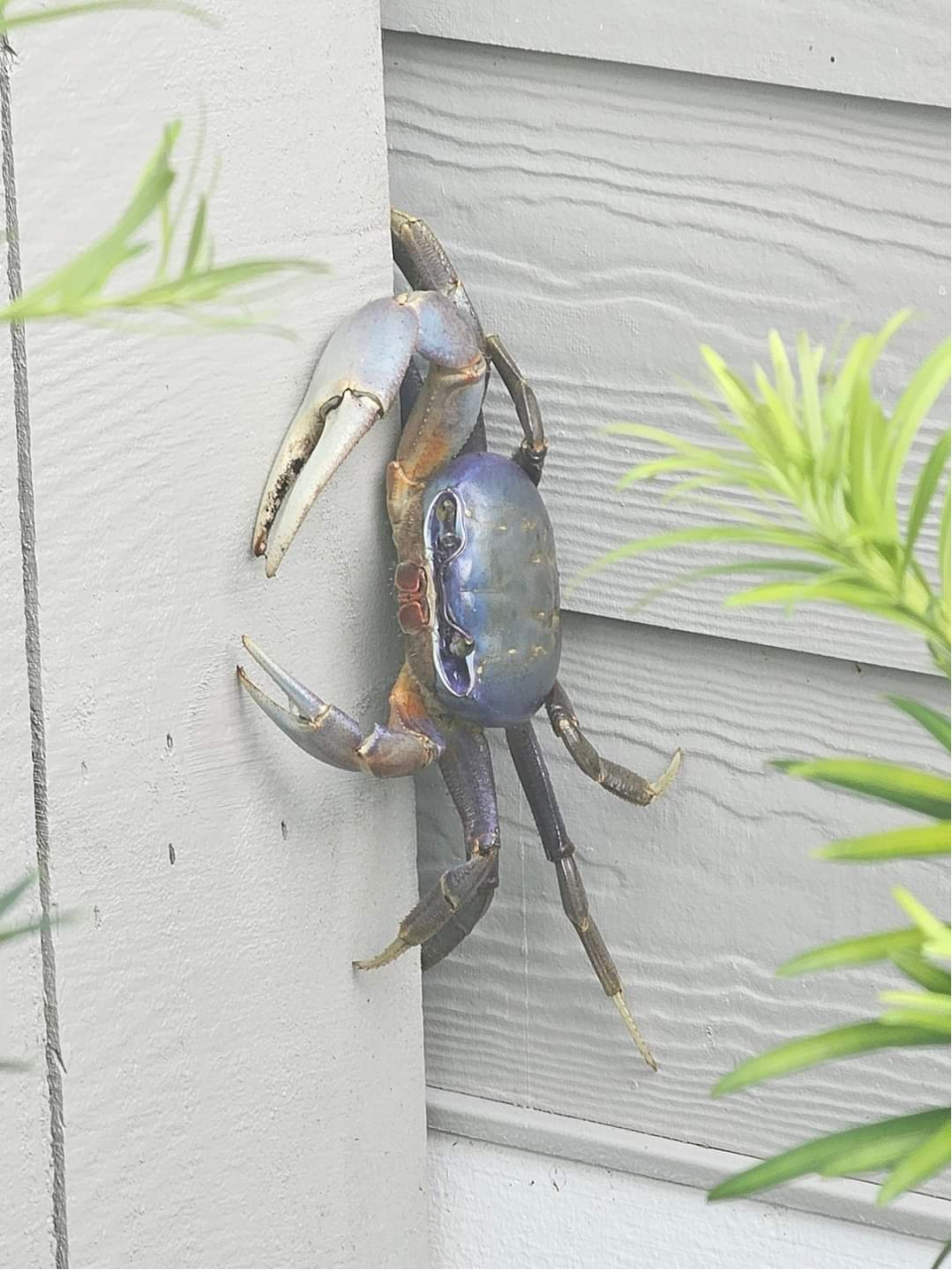
They are.
"The blue land crab is exploited as a food source throughout the Bahamas and the Caribbean," according to UF/IFAS.
"They are particularly popular in the Caribbean, thrown in a pot with some seasoning, allegedly tasting a lot like the blue crabs found in Chesapeake Bay," according to Wild South Florida.
"In Florida, the Fish and Wildlife Conservation Commission has received anecdotal reports that in certain areas of south and central Florida, harvesting effort has increased," prompting limits on harvesting them.
The U.S. Department of the Interior reported blue land crabs have been known to carry salmonella.
While the crabs are eaten in some parts of their native range, you have to catch them first and they're hard to catch.
"In addition to their speed at retreating into burrows deep below ground, the crabs possess a large claw that they can use to dexterously defend themselves," said South Carolina Department of Natural Resources.
Florida rules on harvesting or removing blue land crabs
Removal of crabs is limited to Nov. 1 through June 30. No crabs can be removed from July 1 through Oct. 31.
In Florida, blue land crabs can only be caught by hand or with the use of a landing or dip net.
Harvest, possession, purchase or sale of eggbearing blue land crabs is prohibited.
No person shall harvest in any one day or possess at any time more than 20 blue land crabs. There is no size limit.
An additional rule prohibits harvesting the crabs on rights-of-way of any federal, state or county-maintained road, whether paved or otherwise, or from any state park.
Other names for blue land crab
Blue land crabs, which are officially Cardisoma guanhumi, are also known as land crab, giant land crabs or Juey - in Puerto Rico.
Georgia, South and North Carolina officials asking for public's help
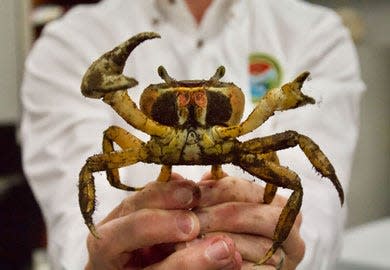
"After a spate of recent reports of the blue land crab, biologists are asking North Carolinians and South Carolinians to help them learn more about where the non-native species is spreading by reporting any sightings," North Carolina Environmental Quality said.
In Georgia, report sightings
In South Carolina, report sightings
This article originally appeared on Treasure Coast Newspapers: Blue land crabs: Florida, Georgia, North Carolina. How to catch, id

